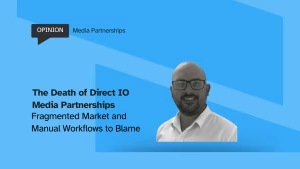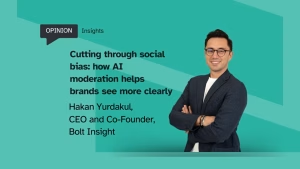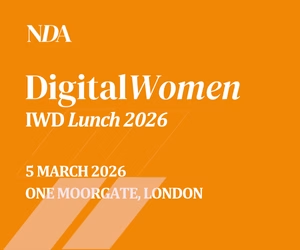These articles have been written by the latest cohort of the Practice Makes UnPerfect programme – a course that helps women find and finesse their public voices.
By Sarah Thomson, Digital Campaigns and Performance Director, News UK
The first ever banner ad was bought by AT&T on HotWired.com in 1994. It was bold; asking ‘have you ever clicked your mouse right here?’ with an arrow pointing to the top right corner and the message underneath predicting, ‘you will’.
The 27 years since, have seen a whirlwind of progress, with the founding of Doubleclick in 1996, the first pop-up ad appearing in 1997 then onwards into browser wars, the age of the social internet and the smartphone revolution.
There is one thing that hasn’t moved on in that time, though. Digital creative.
The AT&T ad was about driving clicks with an upfront slogan and little else. 27 years later, and with more than 455 billion dollars spent on digital advertising worldwide in 2020, digital creative is still focused on direct response rather than developing thoughtful, relevant ads that elicit emotion.
When was the last time you saw a digital campaign that made you sit up and take notice? That made you feel something in the way a great TV ad can do? Despite the level of sophistication and audience segmentation available in digital, it still remains a creative afterthought for many advertisers. There are many reasons for this, of course, but I’d like to deal with two:
Too many rules
Many brands see digital as a highly measurable, metric-driven environment that does not require the flair and emotion of above-the-line advertising. A lot of that hesitancy is down to the rules required for good digital. From spec sizes to multi-variant testing, planning good digital creative means planning for scale and being prepared for a rapid creative feedback loop that may require more and more deliverables every time.
One way to navigate this is to think about your audience first. If you’re targeting an existing digital audience, match rates should help dictate the channel. If it’s about attracting new audiences, what does your research tell you about the spaces they are in so you might narrow down your options? Talk to the platforms and get them to share best practice and tell you why you should use them to achieve your digital KPIs.
The brief
Digital can seem a daunting space to work in for traditional marketing directors. The question of how a brand can maintain strict guidelines in the face of so much output is a recurring one. Many brand leaders are also used to an immediate response; how has the campaign landed now it’s made its TV or out of home debut? This tangibility can be difficult to gauge when digital ads are catered for specific segments and so only smaller, more contextual audiences get to see them. One way to mitigate against these concerns is to improve the briefing process.
In a traditional brief the job for the creative director is about getting that one perfect asset right (be it a TV, print or OOH ad) and then everything else will follow. While a good digital campaign may start with a central idea, the output from this should be varied and contextual. To set up for success, creative and media teams need to be working together from the very start. At the very least, brief them at the same time and involve them in every single discussion. Every creative decision should be made with the media output and audience segmentation in mind. The very best digital creative is designed to make a strong brand impression upfront before the storytelling begins.
There are, of course, many other factors to consider when improving digital creative. Lead times, continually testing and learning and the role of automation are just some that are important considerations. Increasingly, the lack of willingness from brands to go all in on digital creative ultimately is hitting the bottom line. In a (soon-to-be) cookieless world, achieving cut through in digital is all the more important in building brand advocates and repeat visitors. 27 years on, 2022 needs to be the year that digital finally gets creative.










